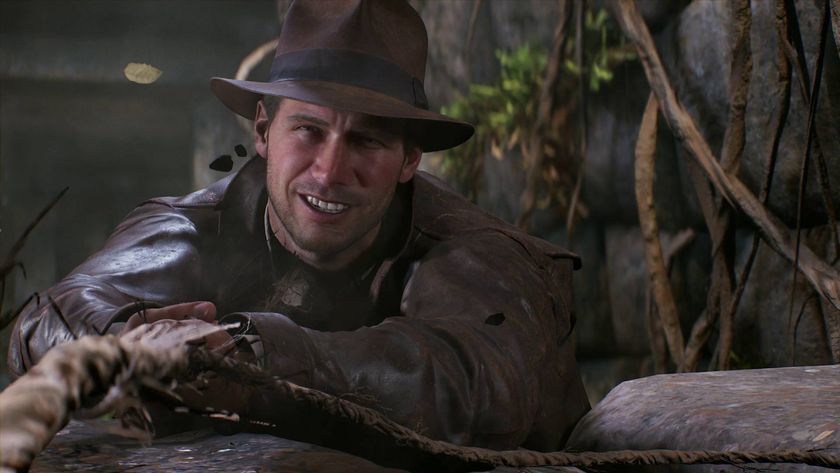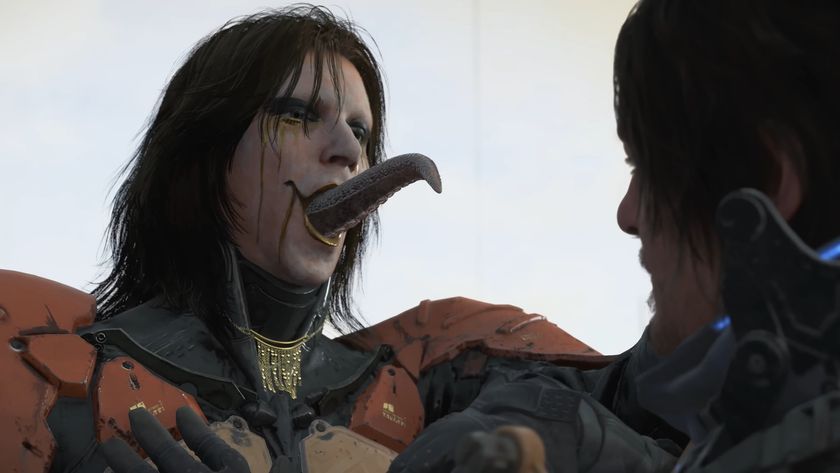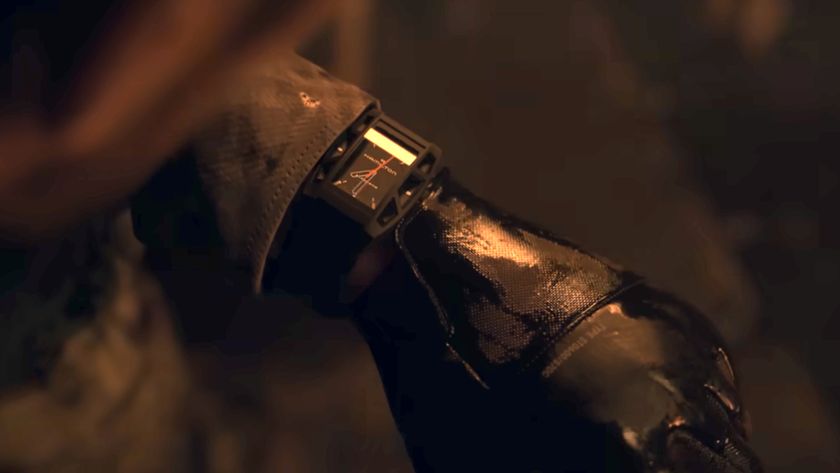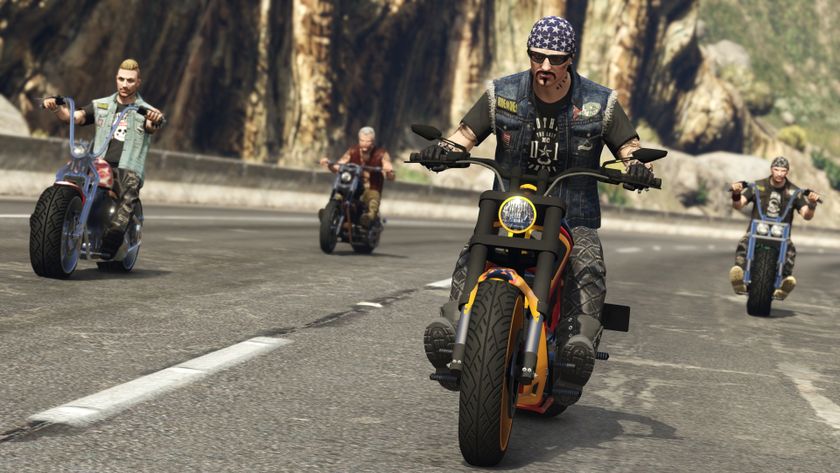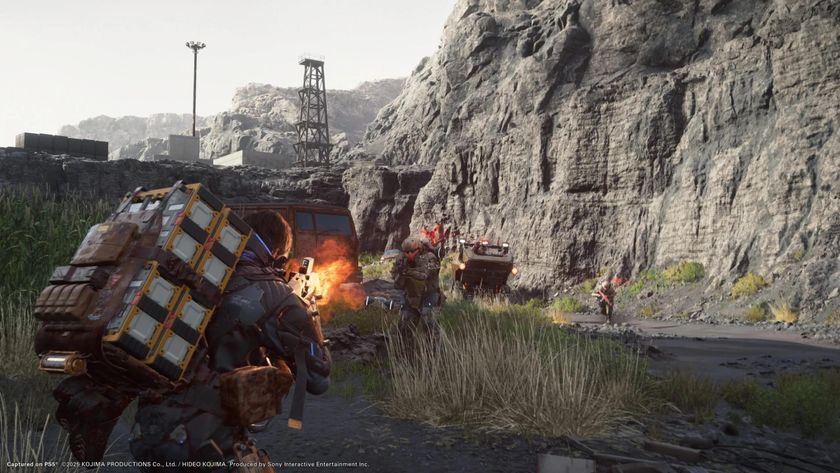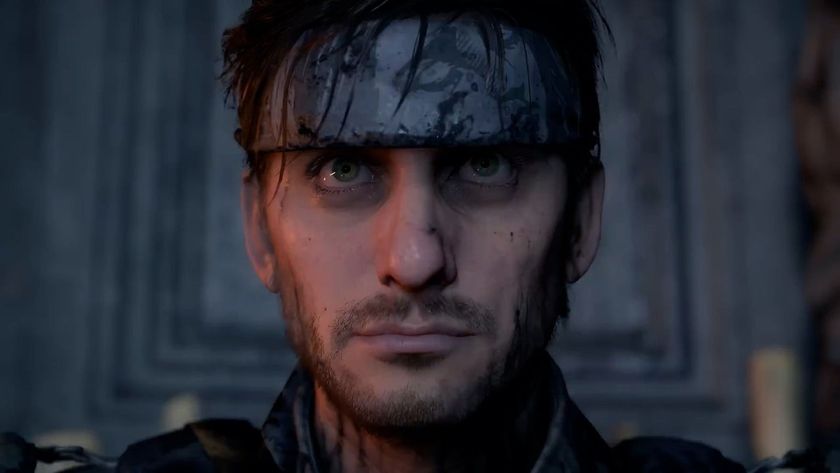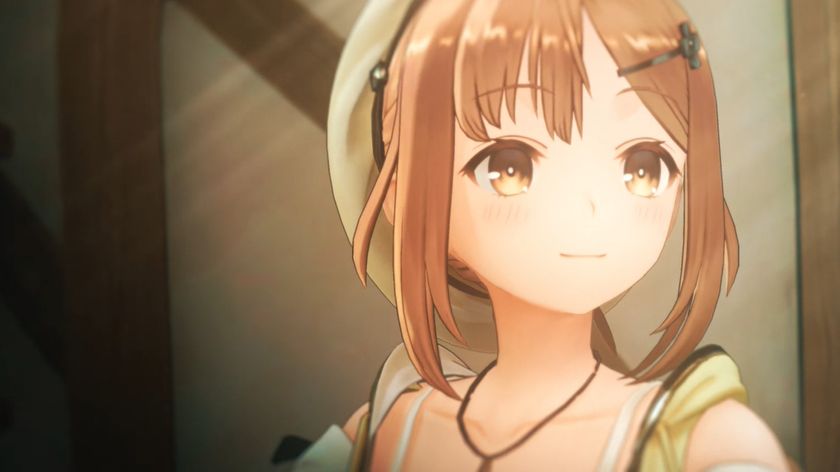Game tie-ins that radically changed the plots of their films
You've seen the film, now play... something completely different
We don't remember Mike Myers saying that...

If there’s two things we’ve done all our lives, it’s watch movies and play video games. Sometimes, if you’ve been very, very good (or bad, depending), the season’s hottest flick gets a video game adaptation. Most of them are so-so, some are adequate, a rare one might be great, but whatever the result, you at least expect what’s on the cover of the box to reflect the content inside.
But sometimes, there are games that stray so far from the source material you wonder why they bothered trying to link the two at all. What follows is a collection of games so disconnected from their sources, you'll wonder why any studio would ever license their IP out in the first place. (SPOILER: It’s because they get paid.)
Aliens: Colonial Marines
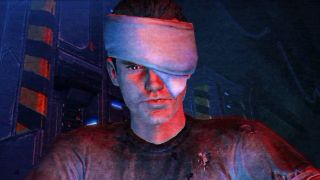
Before the release of Aliens: Colonial Marines, developer Gearbox had proudly touted the game's inclusion within official series canon, prompting fans to hope that the influential movie series might succeed in the very format that had borrowed so much from it. It was also an opportunity to remedy a few of the series' more glaring plot holes, and maybe open up the possibility for future installments. Needless to say, that didn't really happen.
The most glaring story issues had to do with Michael Beihn's Hicks. The character--last seen impaled by an escape pod in Alien 3--was suddenly alive and well In Colonial Marines with basically no explanation. Even Beihn himself found the whole thing a bit pointless. Similarly, after the settlement on LV-426 was wiped out in an explosion so large it could literally be seen from space, it was more than a little jarring to find the whole structure not only standing, but still packed to the rafters with aliens. So much for this being the true sequel to Aliens.
Austin Powers’ Pinball
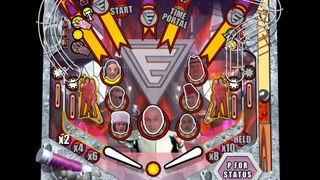
Austin Powers and Pinball: two things that probably go together in an arcade somewhere. But on PlayStation One? Nah, not sure about that. But strangely enough, said game exists and as you’d expect, bears very little likeness to any of the movies it’s meant to capture the essence of.
The game supposedly brought to life two of the Austin Powers films - International Man Of Mystery and The Spy Who Shagged Me - complete with plot, just in the form of a set of two pinball tables. What you ended up with though, was a pair of pinball games littered with Mike Myers’ catchphrases where the only plot was your search for a high score. Groovy, baby?
Ghostbusters (1984)
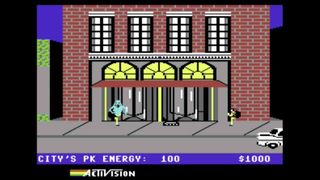
Activision hasn’t got the best track record when it comes to Ghostbusters adaptations. It’s actually made two, both of which have been absolutely terrible at replicating the nuances of either movie.
First came the 1984 adaptation of the original Ghostbusters film featuring Bill Murray, et al. An excellent movie, but a not so excellent game. In fact, Activision fast-tracked the game into production and the result was a reskin of a game already in production called Car Wars. As you might expect, the final game bore little resemblance to the film, as it focused more on vehicles (especially ones that never even appeared in the film) than the ghost-busting foursome.
Sign up to the 12DOVE Newsletter
Weekly digests, tales from the communities you love, and more
Ghostbusters (2016)
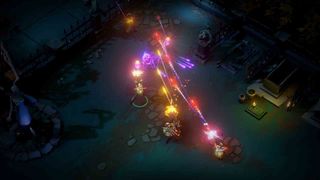
Then came Activision’s second attempt at a Ghostbusters game, but this time based on the 2016 all-female Ghostbusters reboot featuring Melissa McCarthy, et al.
Well, Activision’s blaster proved that bustin' can make you feel bad after all. It’s a twin-stick shooter where you and up to three pals can team up in local co-op (only), where you battle through sprawling levels to a boss. The story? Barely there. The iconic weapons? Weedy. Is it even exciting? No, it’s dishwater dull.
You don’t even get a slither of Holtzmann’s humor.
Live and Let Die
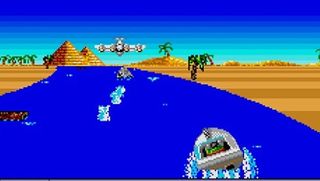
Live and Let Die was the debut of Roger Moore as unarguably the silliest James Bond. This oddball film had drugs, voodoo sacrifices, and ineffective New Orleans cops. The owners of the 007 franchise waited 15 years to create a video game version that delivered boating lessons.
15 minutes of the movie's two hour run-time are given over to a boat chase through the Louisiana bayou. This is the only scene that made it into the game, which began as a boat-racing title unrelated to 007. Instead of launching straight into the movie's plot, Bond--a Royal Naval Commander, let's remember--has to prove to that he knows how to work a speedboat, slogging through three training levels before even attempting the fourth and final race (?) in New Orleans. At which point the game's recreation of the movie's plot ends abruptly. Yeah, there's a reason people were so surprised when GoldenEye was good.
The Texas Chainsaw Massacre
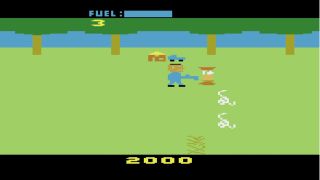
The unregulated wild-west landscape of early gaming gave rise to a few skeletons that continue to haunt the video game closet. Video game violence was primitive by today's standards, but still pissed off people worldwide. So it makes sense that someone would license one of those slasher movies that were also driving moral guardians up the wall.
The most notorious slasher of the day, Tobe Hooper's Texas Chainsaw Massacre, told the story of Sally Hardesty's escape from the home of a gang of cannibals, led by chainsaw-welding Leatherface. Atari 2600 developers Wizard Video decided the most interesting part of this equation wasn't Sally's escape so much as the chainsaw-wielding maniac, so in the game, Leatherface--under your control--kills Sally, her friends, and everyone else he meets, over and over again, until his chainsaw runs out of fuel and the game ends. The petroleum crisis of the late 1970s had been seen as one of the prime drivers of the anxiety that birthed films such as Texas Chainsaw: coincidence, or ingenious meta-commentary? Not much fun either way.
Rambo: First Blood Part II
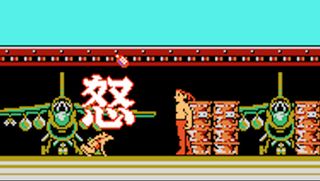
A thriller like First Blood, about a traumatized Vietnam vet who runs afoul of police despite his desire to just be left alone, was hardly NES actioner fodder. Publishers must've been overjoyed when Rambo: First Blood Part II focused on an American hero mowing down faceless grunts deep in foreign jungles. Film Rambo went back to Vietnam and killed a few dozen dudes, while video game Rambo stands in front of trees and massacred hundreds, which makes sense. He was also a wizard, which makes less sense.
See, because Rambo is a 1980s action movie, it has a cowardly bureaucrat getting in the way all the time, and the game is no different. Finish the action portion and you'll return to the base, where the final confrontation with spineless pencil-pusher Murdock plays itself out much as it did in the movie. But dialogue scenes are kinda dull in games, so here Rambo literally hurls harsh language at Murdock, turning the latter into a frog. This scene was absent from the movie, which coincidentally didn't do too well with critics.
Batman

Warner Bros. released Batman at the end of the blockbuster-packed 1980s, preceded by a torrent of marketing that upped the stakes for future summer action movies. Neglecting to release an NES tie-in would have been tantamount to throwing money away! Besides, so longs as it said BATMAN on the box and had a protagonist who looked a bit like the Caped Crusader, everyone's bases were covered, right?
Today the Batman adaptation is well-regarded among NES platformers, though certainly not for fidelity to its source. Having battled his way through such movie-rejects as Killer Moth and the Electrocutioner, Batman's no killing rule--already scrapped in the movie-- is obliterated when the Joker finally shows up. Whereas the character's cinematic death could plausibly be ruled accidental, video game Batman just out and cold-bloodedly hurls his nemesis off a building. Somehow he survived (unlike his film counterpart) and returned in the semi-sequel, Batman: Return of the Joker.
The Goonies II

Konami's The Goonies II isn't directly based off a movie: it's the sequel to the company's own Goonies game, which was never released for home consoles outside Japan. The sequel that would see worldwide release, prompting confusion among players and movie fans alike. Was there a Goonies II movie we weren't aware of? Was Konami attempting to continue the film's storyline single-handedly? Was Spielberg even aware of this?
Everything cleared up once the cartridge booted up, though: turns out the first movie's bad guys escaped from prison and kidnapped the Goonies, utilizing the Fratelli family's secret teleportation abilities to hide the kids throughout the world, locking Goonie best-pal Annie the Mermaid (???) inside an underwater vault. Thus the stage is set for a proto-Metroidvania platforming epic in which remembering your passwords is vital to your success--but forgetting anything you thought you knew about these Goonies is vital to your sanity.
Terminator 3: The Redemption
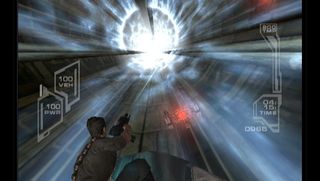
The first couple of Terminator movies had massive inconsistencies from time travel, but most ignored the series' nifty robot time-paradox because watching robots shoot each other over an techno soundtrack is pretty great. Yet, the game Terminator 3: The Redemption stretched the franchise's iffy science to the breaking point.
Terminator hinges on a backwards-only vision of time-travel that works if you don't really think about it. Redemption, in a somewhat arbitrary departure from the plot of the third movie, says screw that: turns out theres also forwards-travel time machines after all! Bi-directional time travel basically ruins the entire concept the series was based on, but at least some middling shooter levels came out of the decision.
The Empire Strikes Back
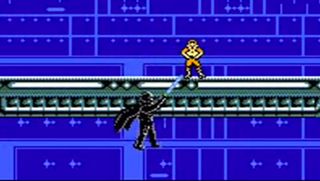
In constructing his Star Wars series, George Lucas drew heavily on the writing of folklorist Joseph Campbell. Campbell taught, among other things, that atonement with the father was a crucial step on the hero's journey. In The Empire Strikes Back, this comes through in the scene where Darth Vader declares himself Luke's father, lops off his son's hand (symbolizing the hero's Will) and leaves him for dead. It's a contender for the most important scene in the entire series.
Unless youre playing the NES game, in which case the hero's journey goes a lot smoother. Whack Vader a few times and the Sith Lord will leap to his own death, taunting that it is our destiny to meet again. Just think, if your only exposure to the original trilogy was somehow through your NES, you'd think Star Wars was just a story about a dude who likes to punch robots, and then he punches their boss, the end.
The Hunt for Red October
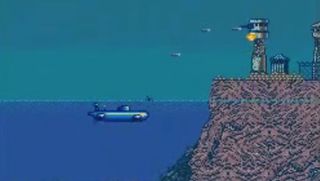
The SNES version of The Hunt for Red October was one of the few games released for Nintendo's Super Scope, so savvy readers will already have figured that it was probably a pretty disappointing outing. Unlike other fun-but-inaccurate entries on this list, The Hunt for Red October game combined complete disregard for the license with all the high-octane twitch-play of a massive slow-moving metal bullet-magnet chugging laboriously through icy waters.
The plot of Red October, originally the debut novel from bestseller-delivery-robot Tom Clancy, concerns a rogue Russian nuclear submarine headed for the USA, triggering a tense stalemate in which it's not certain whether the crew will defect to the US or just start World War III. While this scenario had been recreated halfway faithfully in the 1987 computer game, console developer Beam Software decided that a much more exciting story would be for the Red October to sail all over the place blowing everything up. Besides negating the central tension of the movie's plot, they couldn't even make such an obviously fun concept enjoyable.
